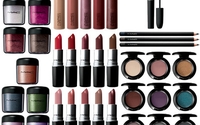Commentary
45% Of Beauty Consumers Prefer Mobile Over Salespeople In Stores
- by Chuck Martin , Staff Writer, February 17, 2016
 The sale of beauty products is a relatively big business and
growing, driven mostly by consumers replacing products that have run out.
The sale of beauty products is a relatively big business and
growing, driven mostly by consumers replacing products that have run out.
And when the shopping of those beauty products happens in a store, many consumers would rather turn to their phone than a salesperson for help.
Total U.S. sales of beauty products reached $46 billion last year and will reach $52 billion in 2020, based on a new study that looked at the influence of mobile on sales.
Beauty product shoppers are increasingly turning to their phones as they shop, with many looking for rewards via mobile, according to the study by Mintel.
The study comprised a survey of 1,600 adult Internet users who own a smartphone and have purchased beauty products in the last 12 months.
As in other product categories, beauty shoppers want deals enabled by their smartphones. The majority (66%) would like to be able to receive rewards by scanning receipts with a mobile app and most (58%) would like a smartphone app that provides beauty product offers to redeem in stores.
Despite the interest in deals via apps, more than half of shoppers still prefer using a retailer’s website over their app when browsing for products. This means beauty retailers will still have to invest resources into both their apps and mobile sites.
And when consumers get to the store, almost half (45%) prefer to turn to their smartphones to get product information instead of asking a salesperson.
An earlier separate study found that while shopping in a store, the majority of mobile shoppers prefer to look up information on their smartphone or tablet rather than talk to a store employee, as I wrote about a while back (58% of Mobile Shoppers Prefer Phones Over Salespeople).
The main reason is that well over half (62%) of mobile shoppers perceive the information they get via their mobile device to be more beneficial than information on in-store displays or sales literature, according to the Consumer Electronics Association study Enhancing the In-Store CE Retail Experience Using Mobile Devices.
That studywas based on a survey of 753 adults who shopped in a retail store within the last 12 months and used their smartphone or tablet to assist in shopping or making a purchase decision while in a store.
The Mintel study found that consumers have a wide range of interests in using mobile in the shopping process. Some even would be interested in using store-supplied mobile technology. This is what interests consumers regarding mobile involvement in shopping:
- 66% -- Receiving rewards by scanning receipt with smartphone app
- 58% -- Smartphone app that gives beauty product offers to redeem in-store
- 54% -- Smartphone app that allows comparing of prices of beauty products
- 51% -- Prefer to use retailer’s mobile website rather than installing their app when browsing for products on smartphone
- 47% -- Redeem coupons received using smartphone when making in-store purchases
- 45% -- Search for product information in-store on mobile device rather than ask a sales associate
- 39% -- Using an in-store tablet provided by the store to research beauty products available
- 36% -- Using in-store tablets provided by the store to pay for beauty products
Interestingly, the majority (63%) of products are to replace or replenish items used regularly and only just under a third (30%) to try something new.
Even though replenishment items could be ordered online, consumers still travel to the store to get them. This is consistent with numerous studies that show a very large percentage of consumers prefers to shop in a physical store rather than buy online.
And for beauty products, the buying can range from malls to local retailers. While drug stores and supermarket account for 30% of market share, the other 70% is from other channels.
No matter the physical location of the store, consumers want more mobile capabilities as they shop.



